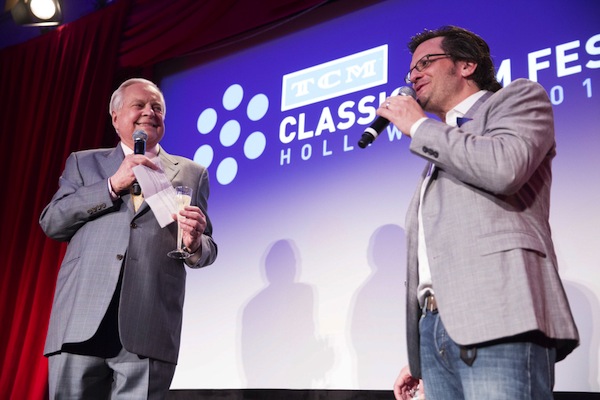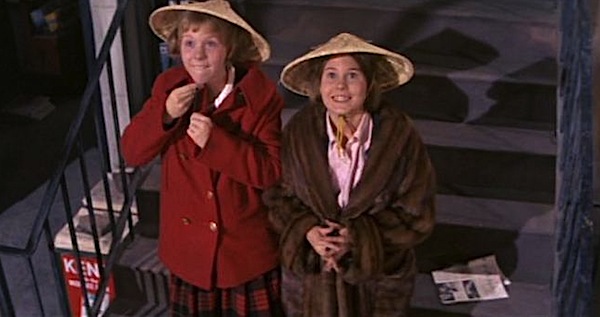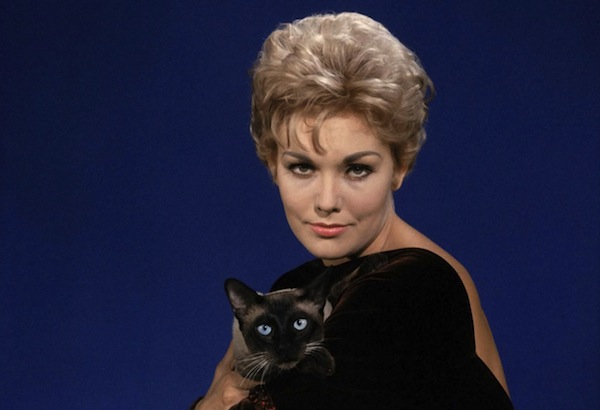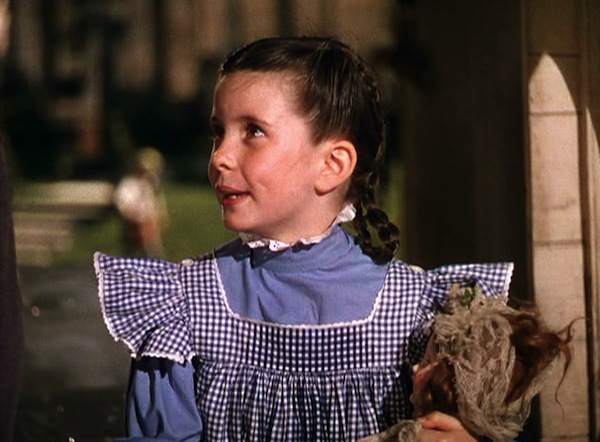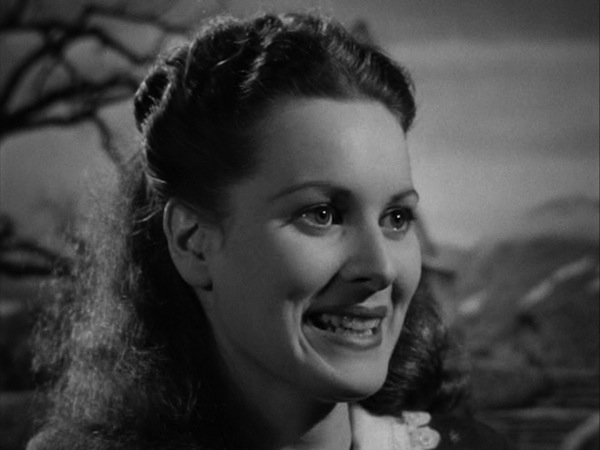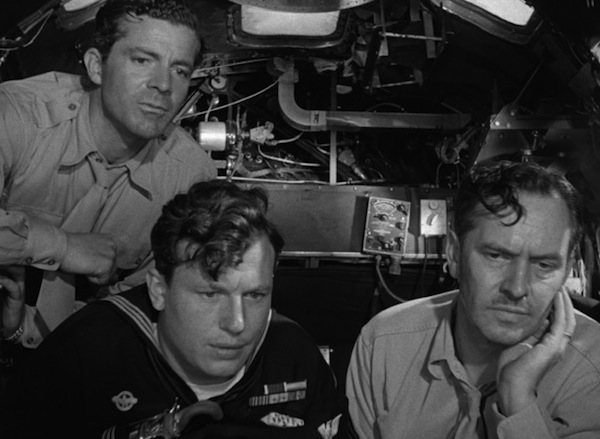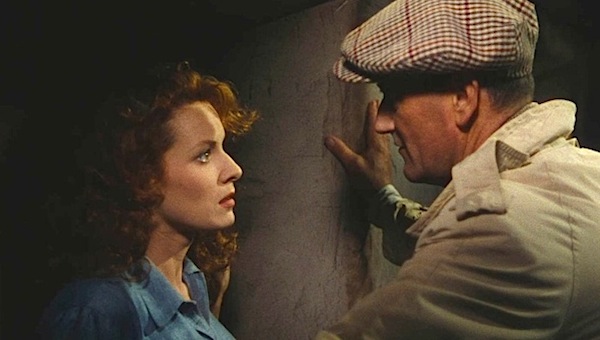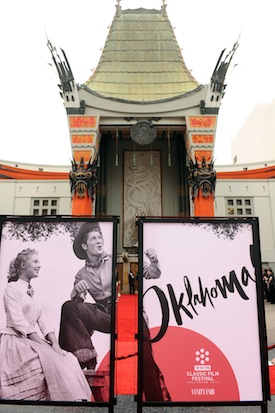 If you love old movies, the best place in the world to have been this past weekend was the fifth annual TCM Classic Film Festival in Hollywood. From Thursday through Sunday, more than 80 classic films, many in sparkling restorations, were screened at historic movie palaces on Hollywood Boulevard along with interviews, panels, and presentations related to various aspects of movie history.
If you love old movies, the best place in the world to have been this past weekend was the fifth annual TCM Classic Film Festival in Hollywood. From Thursday through Sunday, more than 80 classic films, many in sparkling restorations, were screened at historic movie palaces on Hollywood Boulevard along with interviews, panels, and presentations related to various aspects of movie history.
The festival is a gloriously fun, beautifully organized event that attracts thousands of passionate movie lovers from around the world along with many stars and filmmakers from Hollywood’s Golden Age and beyond. This year the festival was timed to honor the 20th anniversary of Turner Classic Movies and there were many gala celebrations including a surprise tribute to Robert Osborne featuring a stage full of his friends from Eva Marie Saint and Jill St. John to Alec Baldwin and Robert Wagner.
Given the number of concurrent screenings and programs, we all had to make some difficult decisions over the weekend but that’s part of the fun. One thing I love about the festival is how the love of classic movies brings together people from all walks of life: Democrats and Republicans, senior citizens and teenagers, the gregarious and the painfully shy all unite to compare notes and celebrate their common passion — perhaps even obsession! There’s something for everyone at this festival: silent movies screened with live orchestra accompaniment, gritty black-and-white war films, colorful escapist musicals, powerful social issue films, and classic Oscar-winning favorites back on the big screen where they belong. TCM programmer Charlie Tabesh and festival director Genevieve McGillicuddy along with the rest of the TCM staff do an amazing job each year — the breadth of the festival allows attendees to tailor their days based on their own unique interests. I was able to squeeze in 15 amazing movies over the course of the festival but I could have made entirely different choices in each time slot and still have had an incredible time.
Being a card-carrying movie geek, I could write pages and pages about every film experience I had at the festival. Instead, I’ll report on eight things that I most loved about this year’s event.
1. Seeing “old friends” Robert Osborne and Ben Mankiewicz. The two main hosts of TCM are treated like royalty at the festival and yet are always accessible to fans. They introduce many of the films and interview the special guests, but are entirely approachable and eager to talk to fellow movie lovers. For avid viewers of the network, these two men feel like family members. At the press conference just before the festival kicked off on Thursday, Robert Osborne was a little misty-eyed when he talked about the impact of TCM. “So many people tell us that we got them through a year of unemployment or through a divorce or an illness,” he said. “It means that much to people — an island they can go to where they can be cheered up or involved in something other than their own problems. I think it’s just great that the channel does that, it’s not an aspect that I expected.” Ben Mankiewicz expressed his gratitude to the attendees. “The TCM family, including this very particular, passionate group of fans, have given me a whole different career than I thought I was going to have.” He talked about how TCM has always brought people together. “This is a network for celebrating movies: conservatives, liberals, progressives, and libertarians all unite in their love of Humphrey Bogart and John Wayne!”
2. Gasping at Barbara Stanwyck and Fred MacMurray’s razor-sharp dialogue in Double Indemnity. I had never seen this 1944 Billy Wilder classic on the big screen, much less at Grauman’s Chinese in the world premiere of a 70th anniversary restoration from the film’s original elements. The steamy story of murderess Phyllis Dietrichson and crooked insurance man Walter Neff goes down as one of my favorite films of all time and the following rapid-fire bit of dialogue between Stanwyck and MacMurray from Billy Wilder and Raymond Chandler’s screenplay is so brilliantly written and executed that I could watch it on a continuous loop:
Phyllis: Mr. Neff, why don’t you drop by tomorrow evening about eight-thirty. He’ll be in then.
Walter Neff: Who?
Phyllis: My husband. You were anxious to talk to him weren’t you?
Walter Neff: Yeah, I was, but I’m sort of getting over the idea, if you know what I mean.
Phyllis: There’s a speed limit in this state, Mr. Neff. Forty-five miles an hour.
Walter Neff: How fast was I going, officer?
Phyllis: I’d say around ninety.
Walter Neff: Suppose you get down off your motorcycle and give me a ticket.
Phyllis: Suppose I let you off with a warning this time.
Walter Neff: Suppose it doesn’t take.
Phyllis: Suppose I have to whack you over the knuckles.
Walter Neff: Suppose I bust out crying and put my head on your shoulder.
Phyllis: Suppose you try putting it on my husband’s shoulder.
Walter Neff: That tears it.
3. Watching The World of Henry Orient with Paula Prentiss and Merrie Spaeth. I have been in love with this 1964 George Roy Hill film since I first saw it as a kid. It is rarely shown on TV or revival houses so it was one of the films I was most excited about seeing at this year’s festival. The screening and discussion with stars Paula Prentiss and Merrie Spaeth surpassed my expectations. The film stars Peter Sellers as Henry Orient, a vain and womanizing concert pianist having an affair with the married Prentiss. When two teenaged girls (Spaeth and Tippy Walker) become obsessed with Orient, their interest creates a series of problems for everyone involved. This film is based on a semi-autobiographical novel written by Nunnally Johnson’s daughter Nora, and it is a delight from start to finish.
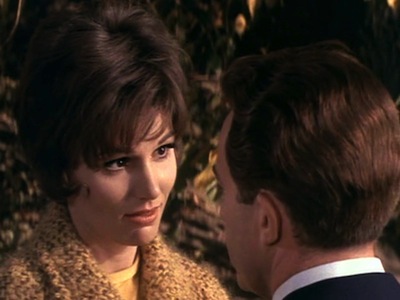 The great cast includes Tom Bosley, Phyllis Thaxter, Bibi Osterwald, and Angela Lansbury as a mother so horrible it almost makes her character in The Manchurian Candidate seem like Little Women’s Marmee. Spaeth, now a successful political consultant and former White House employee, was delightful in talking about her short-lived movie career, and it was a real treat to see the still glamorous Prentiss who introduced her husband of 53 years, actor Richard Benjamin, to resounding applause. Unlike her character in the film, Prentiss and Benjamin may have the longest-lasting marriage in Hollywood! If you’ve never seen this film, you should give yourself a treat.
The great cast includes Tom Bosley, Phyllis Thaxter, Bibi Osterwald, and Angela Lansbury as a mother so horrible it almost makes her character in The Manchurian Candidate seem like Little Women’s Marmee. Spaeth, now a successful political consultant and former White House employee, was delightful in talking about her short-lived movie career, and it was a real treat to see the still glamorous Prentiss who introduced her husband of 53 years, actor Richard Benjamin, to resounding applause. Unlike her character in the film, Prentiss and Benjamin may have the longest-lasting marriage in Hollywood! If you’ve never seen this film, you should give yourself a treat.
4. Cheering Kim Novak’s honesty and vulnerability. Before a screening of the fun 1958 supernatural comedy Bell, Book, and Candle at the historic Egyptian Theater, Robert Osborne brought actress Kim Novak to the stage. Novak appeared at the festival two years ago with Vertigo, the acclaimed Hitchcock film she also made in 1958 with the same co-star, James Stewart. Osborne praised Novak’s honesty about her life and career in the interview they did at that time. This film, which also stars Jack Lemmon and Elsa Lanchester, focuses on a Greenwich Village witch (Kim Novak) who casts a love spell on Jimmy Stewart. But instead of talking about the making of the film, one of Novak’s personal favorites, the actress decided to address what she called “the elephant in the room” — her appearance at the Oscars earlier this year. If you recall, Twitter and Facebook lit up that night with endless cruel comments targeting Novak’s behavior and especially her physical appearance.
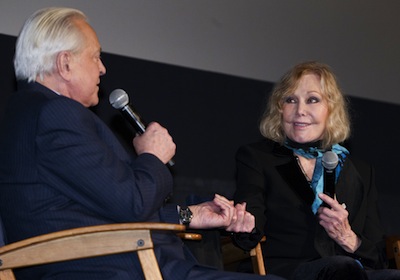 Instead of pretending that it didn’t bother her, the 81-year-old star admitted that she was devastated by the reaction which she called “bullying” (something she was all too familiar with from her days at Columbia Studios over half a century ago). Novak said she felt comfortable talking about this with the supportive TCM crowd who she considered her family. She admitted that she was terrified at the Oscars and felt so vulnerable she stupidly took a pill on an empty stomach. I didn’t think she was acting so weirdly during the broadcast and I was disgusted by all the mean comments about her appearance. Robert Osborne chimed in that he stopped watching the Oscars this year after host Ellen DeGeneres’ joke about Liza Minnelli while the camera was fixed on Liza’s face. I agree with Osborne. Yes, I like Ellen, and yes, I have a sense of humor, but the harsh reality for older women in this town is that you’re often damned if you do and damned if you don’t. Sure, Kim Novak has had work done. Why shouldn’t she if she wants to? And if she didn’t, the same people making hideous comments about her plastic surgery would probably be bitching that she needed some. How about just appreciating the woman’s contribution to the movies? I found her words terribly moving and real and it made me appreciate the film all the more.
Instead of pretending that it didn’t bother her, the 81-year-old star admitted that she was devastated by the reaction which she called “bullying” (something she was all too familiar with from her days at Columbia Studios over half a century ago). Novak said she felt comfortable talking about this with the supportive TCM crowd who she considered her family. She admitted that she was terrified at the Oscars and felt so vulnerable she stupidly took a pill on an empty stomach. I didn’t think she was acting so weirdly during the broadcast and I was disgusted by all the mean comments about her appearance. Robert Osborne chimed in that he stopped watching the Oscars this year after host Ellen DeGeneres’ joke about Liza Minnelli while the camera was fixed on Liza’s face. I agree with Osborne. Yes, I like Ellen, and yes, I have a sense of humor, but the harsh reality for older women in this town is that you’re often damned if you do and damned if you don’t. Sure, Kim Novak has had work done. Why shouldn’t she if she wants to? And if she didn’t, the same people making hideous comments about her plastic surgery would probably be bitching that she needed some. How about just appreciating the woman’s contribution to the movies? I found her words terribly moving and real and it made me appreciate the film all the more.
5. Seeing why Margaret O’Brien was so successful as a child star. It was great fun watching Vincente Minnelli’s superb 1944 MGM musical Meet Me in St. Louis at Grauman’s Chinese Theater and getting to welcome Margaret O’Brien, who played Judy Garland’s youngest sister, Tootie, to talk about the film. O’Brien seems like a very grounded person — a lifesaving personality trait in that business, especially when you’re a child star and inevitably go through the “awkward” years. She regaled the crowd with stories of the making of the film and dispelled the myth, propagated by Vincente Minnelli himself in his autobiography, that he got her to cry in the film’s emotional scenes by telling her that her dog died. Margaret said that never happened (her mother would have never allowed it) and shared the real story: that she and actress June Allyson were in intense competition as MGM’s “town criers.” When the seven-year-old girl had a hard time crying during a scene, her mother took her aside and strategically said, “Don’t worry, honey. They can use fake tears. Of course, June Allyson doesn’t need them but that’s fine, it’s no big deal.” That did it. For the rest of the shoot, O’Brien had no trouble letting the tears flow. She said she had a great time making the film and loved everyone in the cast, especially Judy Garland who she considered like a sister.
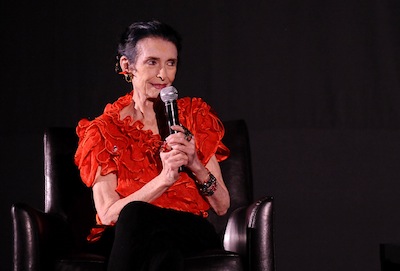 Not that all was rosey in the studio system back then. Margaret talked about how they used to hire look-alikes of the bigger stars and use them as a threat. When Margaret’s mother marched into Louis B. Mayer’s office and asked for a raise to $5,000 a week (that woman had chutzpah!), Mayer said no way. Mrs. O’Brien said, “Okay, well, we’re moving to New York. You can get someone else for the picture.” Mayer trotted out Margaret’s little look-alike on the lot but it didn’t dissuade Mrs. O’Brien so the other little girl was given the role. She was beyond excited to play Tootie in such a big movie but after a few weeks they relented and sent word to New York that Margaret would get the salary increase. The other little girl and her family were devastated. Margaret felt awful, but what could she do — she was a seven-year-old girl! The fired girl’s father was a lighting technician on Meet Me in St. Louis and O’Brien said he ended up having a complete nervous breakdown (after nearly dropping a heavy light on her during the shoot). Oy. Another story that bears repeating is that Margaret recently attended a movie memorabilia auction that included the cute red coat that Tootie wears in the snowman scene. “Hmm,” she thought, “I think I could still get into that.” The petite actress put it on and sure enough, it still fit! Not many actors could don the same costume they wore 70 years earlier!
Not that all was rosey in the studio system back then. Margaret talked about how they used to hire look-alikes of the bigger stars and use them as a threat. When Margaret’s mother marched into Louis B. Mayer’s office and asked for a raise to $5,000 a week (that woman had chutzpah!), Mayer said no way. Mrs. O’Brien said, “Okay, well, we’re moving to New York. You can get someone else for the picture.” Mayer trotted out Margaret’s little look-alike on the lot but it didn’t dissuade Mrs. O’Brien so the other little girl was given the role. She was beyond excited to play Tootie in such a big movie but after a few weeks they relented and sent word to New York that Margaret would get the salary increase. The other little girl and her family were devastated. Margaret felt awful, but what could she do — she was a seven-year-old girl! The fired girl’s father was a lighting technician on Meet Me in St. Louis and O’Brien said he ended up having a complete nervous breakdown (after nearly dropping a heavy light on her during the shoot). Oy. Another story that bears repeating is that Margaret recently attended a movie memorabilia auction that included the cute red coat that Tootie wears in the snowman scene. “Hmm,” she thought, “I think I could still get into that.” The petite actress put it on and sure enough, it still fit! Not many actors could don the same costume they wore 70 years earlier!
6. Basking in the glory of Maureen O’Hara. There are occasionally people who come to the festival whose mere presence is so moving to the fans that it’s enough to be in a room with them — they don’t even need to speak! But then they do speak and it’s all the more thrilling. I remember seeing 100-year old Luise Rainer, winner of back-to-back Best Actress Oscars in 1936 and 1937, at the first TCM festival in 2010 and feeling that way (Rainer is still with us at the age of 104). After getting past a glitch with her hearing aid, she gave a powerful interview that had most of us moved to tears. 93-year-old screen goddess Maureen O’Hara filled that role at this year’s festival. Schlepping all the way from her home in Ireland to introduce a screening of the 1941 Best Picture Winner, How Green Was My Valley, O’Hara only had to be wheeled out on the stage of the El Capitan Theater to bring the sold-out crowd to their feet for an endless ovation and plenty of tears, including from Robert Osborne who had the lucky task of interviewing her before the film.
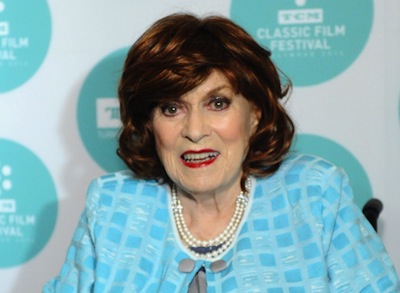 For his first question, Osborne asked O’Hara what it was like to work with John Ford on the film. “I thought we were here to talk about me!” replied the still fiery Irish lass. She had the crowd in the palm of her hand. She never did talk much about the film we were about to see (she did a second interview with Osborne the following day) but spoke a lot about God and growing older and living a good life. Maureen O’Hara has always been a smart, no-nonsense gal who had no patience with some of the more ridiculous trappings of fame and she was certainly not looking for any kind of adulation from the crowd. And yet…we just couldn’t help ourselves. It was great watching that wonderful 73-year-old film about a Welsh mining family up on the big screen again in another world premiere restoration from the original camera negative. I remember seeing How Green Was My Valley on TV as a kid and vowing that if I ever had a daughter, I would name her Angharad after O’Hara’s character. It didn’t fly years later when I had my first child. Maybe it’s just as well — there just aren’t a lot of Jewish girls in Los Angeles named Angharad!
For his first question, Osborne asked O’Hara what it was like to work with John Ford on the film. “I thought we were here to talk about me!” replied the still fiery Irish lass. She had the crowd in the palm of her hand. She never did talk much about the film we were about to see (she did a second interview with Osborne the following day) but spoke a lot about God and growing older and living a good life. Maureen O’Hara has always been a smart, no-nonsense gal who had no patience with some of the more ridiculous trappings of fame and she was certainly not looking for any kind of adulation from the crowd. And yet…we just couldn’t help ourselves. It was great watching that wonderful 73-year-old film about a Welsh mining family up on the big screen again in another world premiere restoration from the original camera negative. I remember seeing How Green Was My Valley on TV as a kid and vowing that if I ever had a daughter, I would name her Angharad after O’Hara’s character. It didn’t fly years later when I had my first child. Maybe it’s just as well — there just aren’t a lot of Jewish girls in Los Angeles named Angharad!
7. Sobbing like a baby during The Best Years of Our Lives and I Never Sang for My Father. As you can see, attending the TCM Classic Film Festival can be a very emotional experience. I probably cried more during those three and a half days than I have since…well, last year’s festival! Is that why we love these movies — because they call up these emotions that we can have a hard time tapping into in our regular lives? Some films, of course, are more emotionally powerful than others. Let’s just say that I practically needed to be hospitalized after viewing William Wyler’s brilliant The Best Years of Our Lives, the 1946 Best Picture winner, about the problems faced by three World War II vets when they return to the States. Ben Mankiewicz went so far as to call William Wyler the greatest movie director in history and Wyler’s son, David, who was at the screening, talked about how this was his father’s most personal film. He suggested that the three returning vets, played by Fredric March, Dana Andrews, and Harold Russell, all represented aspects of Wyler’s own experience during the war. The first scene that reduced me to a sobbing mess was when Fredric March finally arrives home unannounced. His son answers the door and he motions him to keep quiet. Same with his daughter, beautifully played by Teresa Wright. March’s wife, Myrna Loy, is drying the dishes and wonders what’s going on. The wordless sequence when Loy first spots March in the hallway and then run towards him is one of the most poignant moments in movie history, and one that David Wyler said mirrored what happened when his father came back from the war and surprised his mother. The other scene that slaughters me is when Homer, the serviceman who lost both of his hands during the war (played by actual double amputee Harold Russell who won two Oscars for playing this one role—a Best Supporting Oscar and a special Oscar) is showing his childhood sweetheart Wilma (Cathy O’Donnell) what their married life will be like as he takes off his hooks and becomes completely dependent on her. Both of them play this scene so poignantly that you want to stand up and cheer at their wedding that follows. And the tears flow.
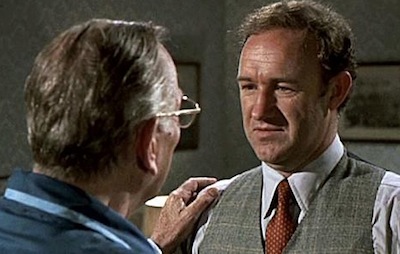 Another highly emotional film for me, one that I hadn’t seen in ages, was the 1970 film I Never Sang for My Father starring Gene Hackman and Melyvn Douglas and directed by Gilbert Cates. Douglas’s granddaughter, actress Illeana Douglas, introduced the film which she felt was one of her grandfather’s best performances. I couldn’t agree more, despite Douglas having starred in some of the most beloved films of all time including Ninotchka (opposite Greta Garbo), Hud, and Being There. The story of a college professor (Hackman) trying to come to terms with his aging father (Douglas) is achingly intense. Melvyn Douglas was nominated for a Best Actor Oscar that year but lost to George C. Scott for Patton who famously turned the award down. Is it too late for a recount? I pretty much cried from the beginning of the film to the closing credits. While some of the filmmaking techniques seemed dated, the acting and the brilliant script by Robert Anderson (based on his play) certainly did not.
Another highly emotional film for me, one that I hadn’t seen in ages, was the 1970 film I Never Sang for My Father starring Gene Hackman and Melyvn Douglas and directed by Gilbert Cates. Douglas’s granddaughter, actress Illeana Douglas, introduced the film which she felt was one of her grandfather’s best performances. I couldn’t agree more, despite Douglas having starred in some of the most beloved films of all time including Ninotchka (opposite Greta Garbo), Hud, and Being There. The story of a college professor (Hackman) trying to come to terms with his aging father (Douglas) is achingly intense. Melvyn Douglas was nominated for a Best Actor Oscar that year but lost to George C. Scott for Patton who famously turned the award down. Is it too late for a recount? I pretty much cried from the beginning of the film to the closing credits. While some of the filmmaking techniques seemed dated, the acting and the brilliant script by Robert Anderson (based on his play) certainly did not.
8. Needing to take a cold shower after The Quiet Man. Before leaving the dazzling phenomenon that is Maureen O’Hara, I have to shamefully admit to my fellow old movie freaks that I had never seen John Ford’s 1952 classic The Quiet Man until this year’s festival. But what a way to see it — in blazing Technicolor on the big screen with Maureen O’Hara herself nearby. O’Hara is breathtaking in the role of an Irish lass who marries American ex-boxer John Wayne, only to have their bliss scuttled when her bitter brother (Victor McClaglen) refuses to hand over her dowry. The superb supporting cast includes Barry Fitzgerald, Mildred Natwick, Ward Bond, Francis Ford (the director’s brother), and Maureen O’Hara’s younger brothers Charles and James Fitzsimons. But it is the sizzling chemistry between O’Hara and Wayne that really threw me for a loop. There have been many great on-screen pairings over the years but I can’t think of another couple whose burning sexuality jumps off the screen in the same way. Even Robert Mitchum and Jane Russell seem like frigid schoolmates compared to the unbridled eroticism of Maureen O’Hara and John Wayne. They should have passed out cigarettes at the end of the film!
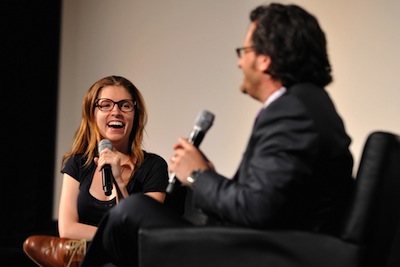 Other great moments I had at the festival included Ginger Rogers and David Niven in the surprisingly racy Bachelor Mother (1939), the hilarious Charles Busch introducing Bette Davis and Joan Crawford in What Ever Happened to Baby Jane? (1962), a riotously funny conversation between Anna Kendrick and Ben Mankiewicz before a screening of The Women (1939), a talk with Norman Jewison, composer John Williams, and casting director Lynn Stalmaster following Fiddler on the Roof (1971), watching a gorgeous print of the magnificent Gone With the Wind (1939), and enjoying the 3D IMAX version of The Wizard of Oz (1939) at Grauman’s Chinese, 75 years after it premiered at that very theater. There’s no place like home!
Other great moments I had at the festival included Ginger Rogers and David Niven in the surprisingly racy Bachelor Mother (1939), the hilarious Charles Busch introducing Bette Davis and Joan Crawford in What Ever Happened to Baby Jane? (1962), a riotously funny conversation between Anna Kendrick and Ben Mankiewicz before a screening of The Women (1939), a talk with Norman Jewison, composer John Williams, and casting director Lynn Stalmaster following Fiddler on the Roof (1971), watching a gorgeous print of the magnificent Gone With the Wind (1939), and enjoying the 3D IMAX version of The Wizard of Oz (1939) at Grauman’s Chinese, 75 years after it premiered at that very theater. There’s no place like home!
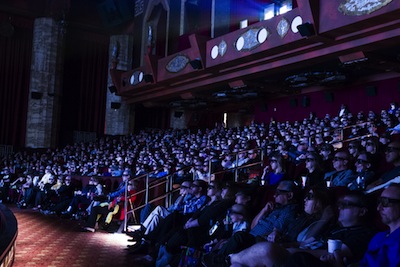 It’s impossible to get through the TCM Classic Film Festival without some regrets. I’d give anything to have seen many of the other films and special guests. Touch of Evil, Make Way for Tomorrow, A Matter of Life and Death, Why Worry?, Stella Dallas, the original Japanese Godzilla, A Hard Day’s Night, The Pawnbroker, Hitchcock’s The Lodger, a special showing of National Velvet with Margaret O’Brien talking about the late Mickey Rooney. Ugh, isn’t cloning legal in this state yet?
It’s impossible to get through the TCM Classic Film Festival without some regrets. I’d give anything to have seen many of the other films and special guests. Touch of Evil, Make Way for Tomorrow, A Matter of Life and Death, Why Worry?, Stella Dallas, the original Japanese Godzilla, A Hard Day’s Night, The Pawnbroker, Hitchcock’s The Lodger, a special showing of National Velvet with Margaret O’Brien talking about the late Mickey Rooney. Ugh, isn’t cloning legal in this state yet?
Despite total exhaustion, eye strain, dangerous over-consumption of concession stand treats, and my wife’s threat to file desertion charges, this is simply the best movie event of the year. See you all in 2015!


